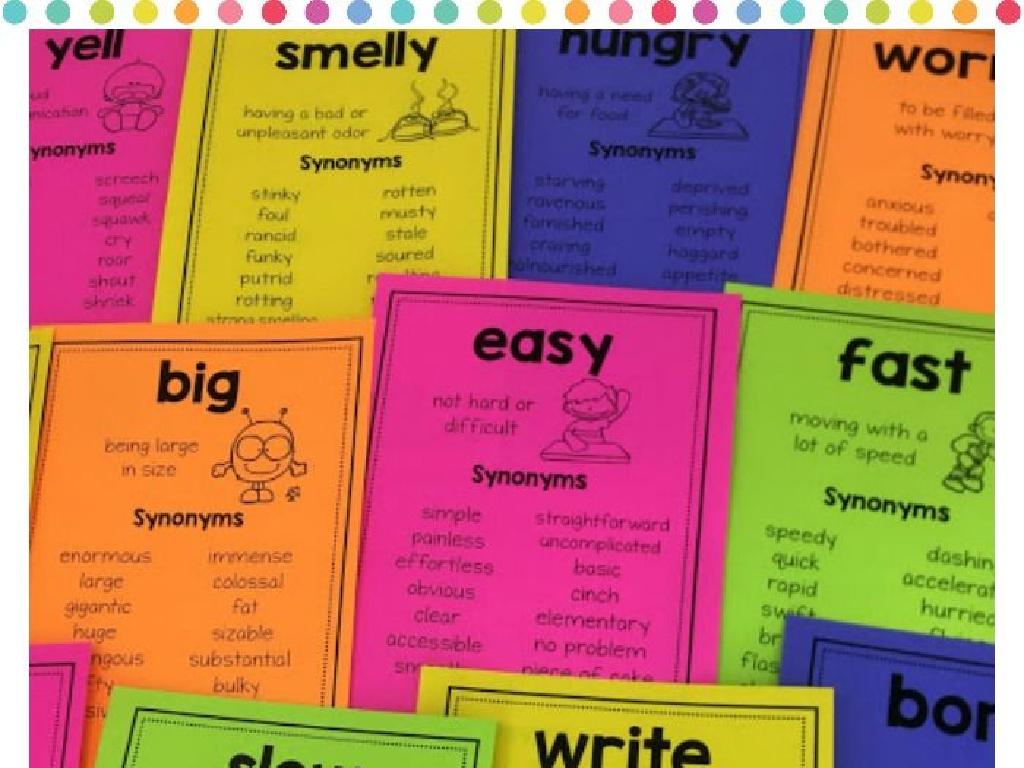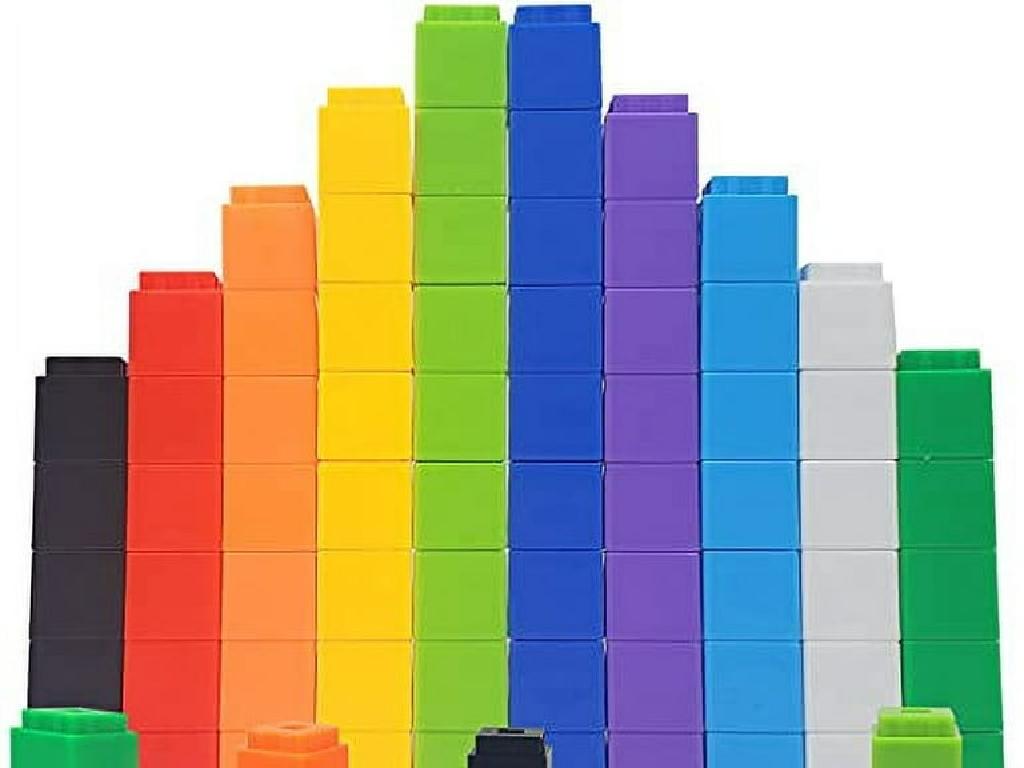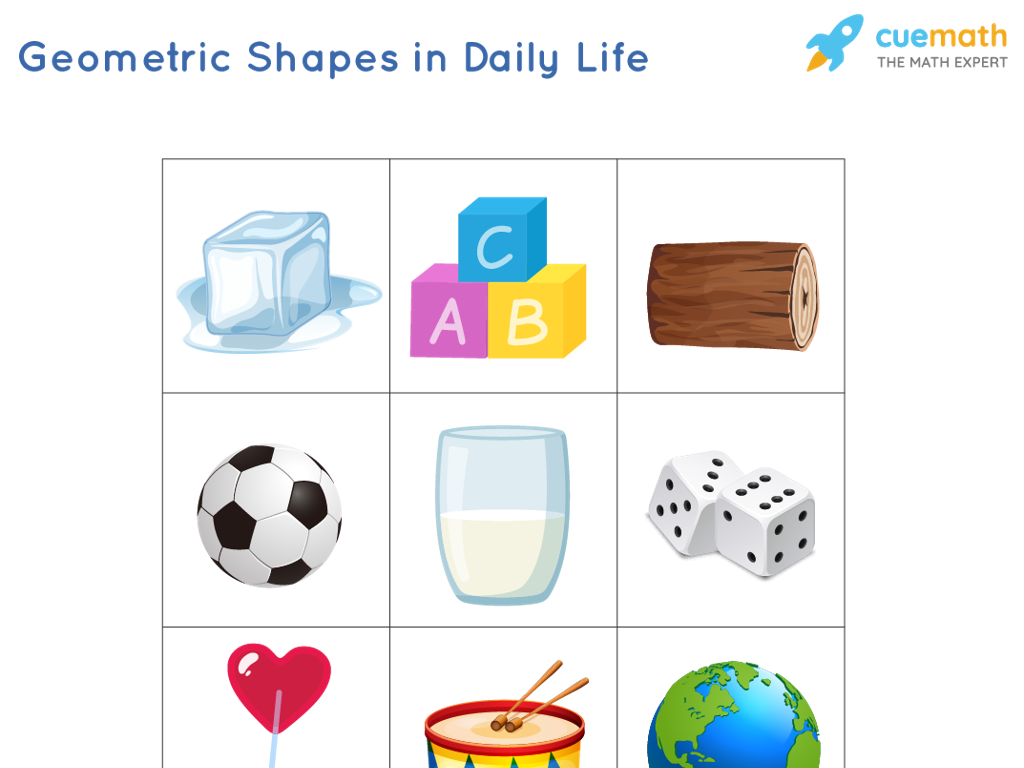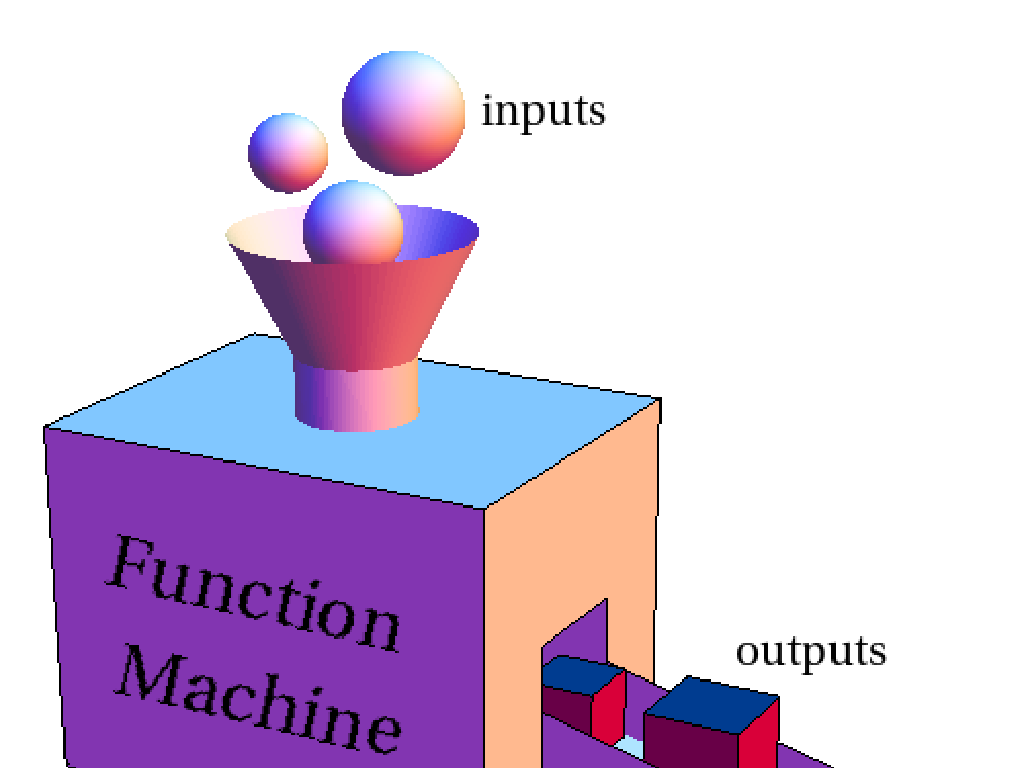Which Addition Sentence Is True? - Sums To 20
Subject: Math
Grade: Second grade
Topic: Addition: One Digit
Please LOG IN to download the presentation. Access is available to registered users only.
View More Content
Becoming Addition Experts: Sums to 20
– Welcome to addition mastery
– Adding numbers within 20
– Learn to add numbers like 9 + 7 or 8 + 5
– Identifying true addition sentences
– Use addition to find correct sentences
– Practice with examples
– We’ll solve problems like 6 + 7 = ?, 9 + 8 = ? together
|
This slide introduces second-grade students to the concept of addition with sums up to 20. The goal is to help them understand how to add one-digit numbers and recognize true addition sentences. Start by engaging them with the excitement of becoming ‘addition experts.’ Explain that they will learn to add numbers within 20 and how to verify the accuracy of addition sentences. Provide examples and encourage them to solve addition problems during the lesson. Use manipulatives like counters or visual aids to help them grasp the concept. Ensure to give them time to practice with peers or individually and to ask questions for clarification.
Understanding Addition: Sums to 20
– Addition combines numbers
– It’s like 2 apples + 3 apples = 5 apples
– Like adding toys together
– Imagine 4 teddy bears + 3 teddy bears
– Adding makes totals bigger
– Practice with sums to 20
– Try 7 + 8 or 6 + 9 and see the total!
|
This slide introduces the concept of addition as a way to combine two or more numbers to find a total. Use relatable examples like combining groups of toys to make the concept more tangible for second graders. Emphasize that when we add, the total number of items increases. Encourage students to think of addition as gathering things together to have more. To practice, provide examples that add up to 20, such as 7 + 13 or 10 + 10, and have students work through these problems using physical objects like counters or drawings to visualize the concept.
True Addition Sentences: Sums to 20
– Understanding addition sentences
– An addition sentence includes numbers, a plus sign (+), and an equals sign (=)
– Example: 4 + 3 = 7
– Let’s look at 4 + 3. When we add 4 and 3 together, we get 7
– ‘Addends’ and ‘Sum’
– Addends are the numbers we add. The sum is the answer we get
– True sentences sum to 20
– Find sentences where addends add up to 20, like 12 + 8 = 20
|
This slide introduces students to the concept of addition sentences and their components. Start by explaining that an addition sentence is a mathematical expression that shows two or more numbers being added together. Use simple examples like 4 + 3 = 7 to illustrate this point. Clarify the terminology by defining ‘addends’ as the numbers being added and ‘sum’ as the result of the addition. Emphasize that for this activity, they need to find addition sentences that equal 20. Encourage students to think of different combinations of numbers that add up to 20 and to verify their answers by actually performing the addition.
Sums to 20: True Addition Sentences
– Understanding the sum
– Sum is the total from adding numbers
– Sums equal to 20 or less
– Today’s focus: additions that make 20
– Exploring examples together
– We’ll add numbers and see which make 20
– Practice finding true sums
|
This slide introduces the concept of sums in addition, specifically focusing on sums that result in 20 or less, which is a key skill for second graders. Begin by explaining what a sum is and how it is the result of adding two or more numbers together. Emphasize that today’s lesson will only deal with sums that are 20 or less to simplify the learning process. Use visual aids and interactive examples to demonstrate addition problems, and encourage students to participate by solving them together as a class. The goal is to help students identify true addition sentences that sum up to 20. For practice, provide a variety of addition problems and have students determine which ones are true by adding the numbers to see if they equal 20 or less. This will help reinforce their understanding and ability to find sums to 20.
True or False: Addition Sentences
– Not all sums are correct
– Add numbers to check sums
– Use addition to verify if the sum of two numbers equals 20
– Practice with true or false
– We’ll solve problems together in class
– Sums should equal 20
– Example: Is 12 + 8 true? Yes, because it equals 20
|
This slide is aimed at helping second-grade students understand that not every addition sentence they come across will be true. They need to perform the addition to verify if the sum is correct. The focus is on sums that equal 20. During the class, engage the students with practice problems where they determine if given addition sentences are true or false. For example, present sentences like ‘9 + 11 = 20′ (true) and ’10 + 9 = 20’ (false) and ask the students to solve and verify. This activity will help reinforce their addition skills and their understanding of the concept of equality.
Example Time: True Addition Sentences
– Understanding addition sentences
– Example: 8 + 7 = 15
– Is 8 plus 7 really equal to 15?
– Counting to verify
– Let’s count up from 8 to 15 together
– Your turn: 10 + 6 = ?
– Now it’s your turn to try and see if 10 plus 6 equals 16
|
This slide is designed to help students understand the concept of verifying addition sentences. Start by showing them the example of 8 + 7 = 15 and walk them through the process of counting on from 8 to 15 to see if the sentence is true. Emphasize the importance of counting carefully and checking their work. After the example, encourage students to try the next addition sentence on their own with 10 + 6. Remind them to use their fingers or objects to count if needed. This exercise will help reinforce their understanding of addition and the concept of true or false mathematical sentences. Be prepared to assist students who may struggle and offer praise to those who get it right.
Let’s Practice Together: True Addition Sentences
– I’ll show an addition sentence
– You tell me if it’s true or false
– Use fingers or drawings to add
– For example, use objects like pencils or blocks to add 7 + 8.
– Remember to count carefully!
– Double-check your counting to make sure it adds up to 20.
|
This slide is an interactive class activity designed to help second-grade students practice their addition skills and verify the truth of addition sentences that sum up to 20. Display different addition sentences on the board and ask students to determine if they are true or false. Encourage them to use their fingers, draw objects, or use physical counters like blocks or beads to help them add the numbers together. Remind them to count carefully and check their work. This activity will reinforce their understanding of addition and help them become more confident in their ability to solve arithmetic problems. Possible sentences to use: 9 + 11, 10 + 10, 8 + 7, 12 + 9. Rotate through different students for each problem to ensure everyone gets a chance to participate.
Class Activity: Addition Race
– Get ready for an addition race
– You’ll receive true/false addition sentences
– Team up with a partner for the challenge
– Find the true sums quickly
|
This activity is designed to be a fun and engaging way for students to practice their addition skills and reinforce their understanding of sums up to 20. Distribute a worksheet with a mix of true or false addition sentences to each pair of students. Encourage them to work together to solve each problem as quickly as possible, fostering a sense of teamwork and collaboration. Monitor the class to ensure that all students are participating and offer assistance as needed. Possible variations of the activity could include a relay race where students take turns solving problems, a timed challenge to add a competitive edge, or using manipulatives for a hands-on approach. The goal is to create an enjoyable learning experience that helps students become more confident in their addition skills.
Becoming Addition Experts!
– Congratulations, addition detectives!
– Mastered true addition sentences
– You can now spot if an addition equals 20
– Practice makes perfect
– Keep solving problems every day
– Aim for addition expertise
|
This slide is meant to congratulate the students on their hard work and progress in understanding addition sentences that sum up to 20. It’s important to reinforce their confidence by acknowledging their new skills as ‘addition detectives.’ Encourage them to continue practicing with different sets of numbers to become even more proficient. Remind them that practice is key to mastering any math skill. As a follow-up activity, consider assigning a fun worksheet with a mix of true and false addition sentences to solve at home. This will help them apply what they’ve learned in a real-world context and solidify their understanding of the concept.






